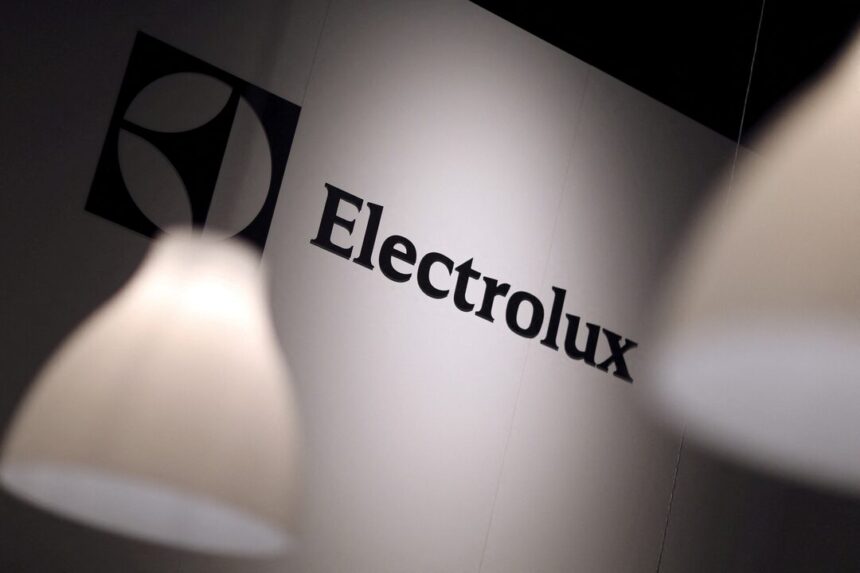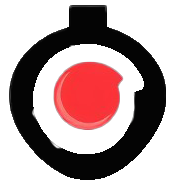How will businesses use AI in the short-term and the long-term? There is a lot of speculation regarding its potential for specific businesses. Right now, for a lot of people, the exposure to AI is a digital entity on the other end of a customer service phoneline. For those creating platforms or running enterprises, AI is creeping steadily into day-to-day internal and external job activity, offerings and experiences.
A recent shout-out in Barron’s, the financial newspaper, remarked that this year’s Nobel prize in economics feted work on the economics of technological innovation which is “… timely and foundational to understanding how AI could change the economic landscape.” Barron’s also points out that there is much disruption from AI and that disruption is “… not fully understood.” The Nobel-awarded work shows “… how new technologies emerge and grow despite the threat they represent to the present-day economy.”
In other words, there is a lot of uncertainty and disorder on the way.
This article is part of Branding Strategy Insider’s newsletter. You can sign up here to get thought pieces like this sent to your inbox.
No one can forecast the future with certainty. People and organizations want certainty about tomorrow before making decisions today. Yet, forecasting is fallible. A futurist once said, “The objective is not to forecast the future, for no one can tell you what the future will be. The objective is to take responsibility as an organization for the future.” For brands, having a possible dream, a North Star is the best way to future-proof. Future-proofing is not fool proof. But, having a clear vision of the world in which you wish your brand to win is a great start.
The following is a true story about a project that died and what happens when a brand-to-be with a futuristic idea gets ahead of itself in terms of innovation. It’s a story about the failure of a project from a team that foresaw the future but could not figure out how to bring their vision into fruition because the team could not see beyond the company’s established products.
Forget the deflated egos. Being ahead of the times with new digital, intelligent innovations and not knowing exactly what are the innovation’s benefits, and then having the innovation stumble is expensive. Very expensive.
A Case Study In Innovation
In 2000, Electrolux, along with a potential collaboration with Swedish telecom partner, Ericsson, decided to use nascent digital Internet technology with appliances to create an easy-to-use “electronic” interface that would allow individuals to spend more time with “family.” Ericsson would supply the telecommunications capabilities; Electrolux would provide the “hardware,” i.e., the appliances.
The vision for the offering was vague, even though this vision generated an immense sense of excitement for the product and service team named e2. The internal excitement extended to the rental of office space, letterhead, logo, furniture, phones and computers. The office space had been officially completed before our two-person brand management consulting assignment: our task was to help the Electrolux executives clarify exactly what e2 was since no one on the e2 team had the same answer. What would be the brand purpose and what would be the brand promise? Our task was to assist the e2 team in figuring out what specifically was the e2 brand: what will be the e2 brand promise? If the customer were to put e2 in a shopping bag, would e2 be a router, a computer screen on a refrigerator, a list of digital telecom services or a social networking platform?
Our small group had been consulting with Electrolux since 1999. The gist of our ongoing work was which brand approach should they adopt for their global portfolio: Family branding or Endorsement branding? We had also advised as to the purpose, design, analysis and synthesis of data for a global Electrolux brand scorecard covering the majority of Electrolux’ global brands, such as AEG, Zanussi, Electrolux.
After interviewing the e2 team, the team envisioned “e2” as an innovative means of selling connected, networked appliances to create a smart home to make family communications easier while generating enriched family relationships, organization and better information management. The e2 technology would be specifically tailored to the home and home-based users. Own the home was the mantra.
The vision was a vast landscape of smart homes with appliances as the connective tissue.
The overarching vision was to establish e2 as “the global leader in kitchen-based platforms for everyday use of electronic household services. The mission was to “Improve comfort and quality of life in our homes by providing customers with intuitive and trouble-free access to electronic household services.” Additionally, e2 would “Establish the kitchen as the center of the household for everyday (and every day) household management. Enable the market for electronic household services.” One of the trends that Electrolux chased was the “open kitchen” format in home design.
From a strategic standpoint, e2 would be the means by which the kitchen would become the central point for day-to-day basic communication and information needs. This meant creating a platform for Electrolux in the “intelligent kitchen,” while making the connected and networked home through an operator-managed service gateway/home server.
Electrolux wanted to generate a business enabling other wireless telecom operators. However, the Ericsson e-box (router) would be bundled with Electrolux major appliances globally. Hopefully, e2 would stimulate development of new applications and services by 3rd party service providers.
There were some snags the e2 team faced. Even though there was a vision, mission and a list of corporate strategic intents, the e2 team did not agree on what problems e2 was solving for customers and what exactly a customer would be purchasing and using.
Would it be possible to buy e2 without buying an Electrolux appliance? What would be in the “shopping bag?” A router? A refrigerator? An invitation to a social media-type platform?
To be fair, if you asked people 30 years ago if they wanted a sleek product that fit in your pocket, made phone calls, took pictures, allowed you to do banking, let you shop and purchase all sorts of goods, communicate with friends without making calls, allowed you to ask an entity to make lists called shopping and gave you influencers who could advise on your style and your life, people would have said “What? Why?”
Enterprises must understand the difference between a great idea and poor execution. There may be a fabulous brand promise but it is not achievable. In this instance, the idea of a smart home filled with smart appliances was terrific. The problem was the way in which this brand promise would be delivered; just what was e2 delivering? Was e2 better as a platform rather than as a computer on a refrigerator? Could Electrolux look beyond its bread-and-butter products and see the wireless offerings without an Electrolux cooker?
Step back for a moment. The office space was rented and decorated. A team of executives had a list of features that a service or product or both entity would deliver. The project would be years ahead of competitors who wished to make homes “smart.” Electrolux could leverage the powers of the Internet that was revolutionizing people’s lives. Electrolux could leverage information communications with services delivered to the home. Electrolux could “own the home” as the home was becoming more than a location.
The e2 team provided their comments on e2 strengths, weaknesses, threats and opportunities: a SWOT analysis. Our approach is always to add Trends and Actions to a SWOT. A SWOTTA allows participants to assess their ideas against the background of trends and, then, reviewing the SWOTT, add the immediate, necessary actions that the team must execute.
It is within the Actions list, that the glaring issues with e2 became real. The e2 team realized that they did not know enough about the potential customer for e2. Recruitment and corporate buy-in were immediate actions. Explaining just what e2 would do and how customers, internal and external, would perceive e2. Most telling, was knowing what value e2 would deliver. What will be the perceived customer value of e2? Is the value in the brand Electrolux? In the brand Ericsson? In the hardware? Or in the software?
The e2 team used our constructs to create an e2 brand promise. However, the inability to address “what is e2?” made this task difficult. In fact, there was no agreement. The team generated four different brand promises. The final recommendation was an amalgam of the four brand promises. The final version was satisfactory but everyone knew in their hearts that the final version did not suffice.
Without agreement as to what was e2, the project fell to the side. This was not the first time Electrolux had stopped a futuristic, potentially game-changing project. In 2000, Electrolux created a Screen Fridge: a refrigerator with a computer on the front. Electrolux made only one Screen Fridge. The idea was still viable within the corporation at the time of e2. There was synergy between Screen Fridge and e2. A smart home was just around the proverbial corner. But large appliances were in the way.
A smart home connects and maximizes the benefits of appliances. But, the brand of appliance is not the purchase. As we know now, it was those with ideas about wireless connections and networking that brought the smart home to life.
The concept of a household platform could have been a worthwhile pioneering effort. Tying the platform to an appliance was getting in the way of actually thinking about the powerful potential of such a platform. Electrolux wanted appliances to be the heroes of e2. As we have learned, connecting appliances, thermostats, lawn irrigation systems, lighting, garage door opening and security is today quite common. Appliances are part of the system. Appliances are not the hub.
Who owns the home today? Who provides technology that makes your time more productive? Who includes technology that makes life easier and better at home? It is not your dishwasher. It is the systems from Google, ADT, Ring, Comcast and such. Electrolux could have owned the home if the company had been able to clearly see the role that appliances would have in this future. Electrolux seemingly could not move laterally. Electrolux is a company that makes things with motors. Making something that was not motorized but linked motorized Electrolux products was not part of e2.
As a marketer, your job is to compete. Compete differently with The Blake Project.
Electrolux did not suffer from a lack of innovation or a lack of focus on the customer. There was no disregard for the changing world—quite the contrary. The ideas – over the course of years – emanating from Electrolux would have been game-changers. The problem was living off of the incredibly profitable, global momentum created by Electrolux’ facility with appliances.
This is not unusual. Campbell’s and Kellogg’s have seen the rise of interest in snack foods while pantry staples such as red-and-white soup cans and boxed cold cereals generate less interest. Tesla has seemingly lost interest in cars that people actually drive; the self-driving vehicle is now the focus.
There is no certainty when it comes to the future. The best brands can do is be confident that what they are doing now is better than what they were doing. There is enormous risk with pioneering products and services. This is why IBM had its ThinkPad laptop group separated from its IBM mainframes, until Lou Gerstner said the brand is IBM. When brand IBM could not see the future of ThinkPad while focusing on mainframe services, ThinkPad was sold.
Sadly, e2 failed. Not because the idea was flawed. The idea was ahead of its time. The idea died because the idea was chained to appliances as the hub. Electrolux makes appliances. It appeared as if Electrolux could not see a platform that did not sell appliances. Or make appliances the heroes. Continuing to do what you know how to do when the world around you is changing is a tendency for trouble. In this case, it was a death-knell for a great idea.
Contributed to Branding Strategy Insider by: Joan Kiddon, Partner, The Blake Project, Author of The Paradox Planet: Creating Brand Experiences For The Age Of I
At The Blake Project, we help clients worldwide, in all stages of development, define and articulate what makes them competitive and valuable at pivotal moments of change. Please email us to learn how we can help you compete differently.
Branding Strategy Insider is a service of The Blake Project: A strategic brand consultancy specializing in Brand Research, Brand Strategy, Brand Growth, and Brand Education
Post Views: 0










